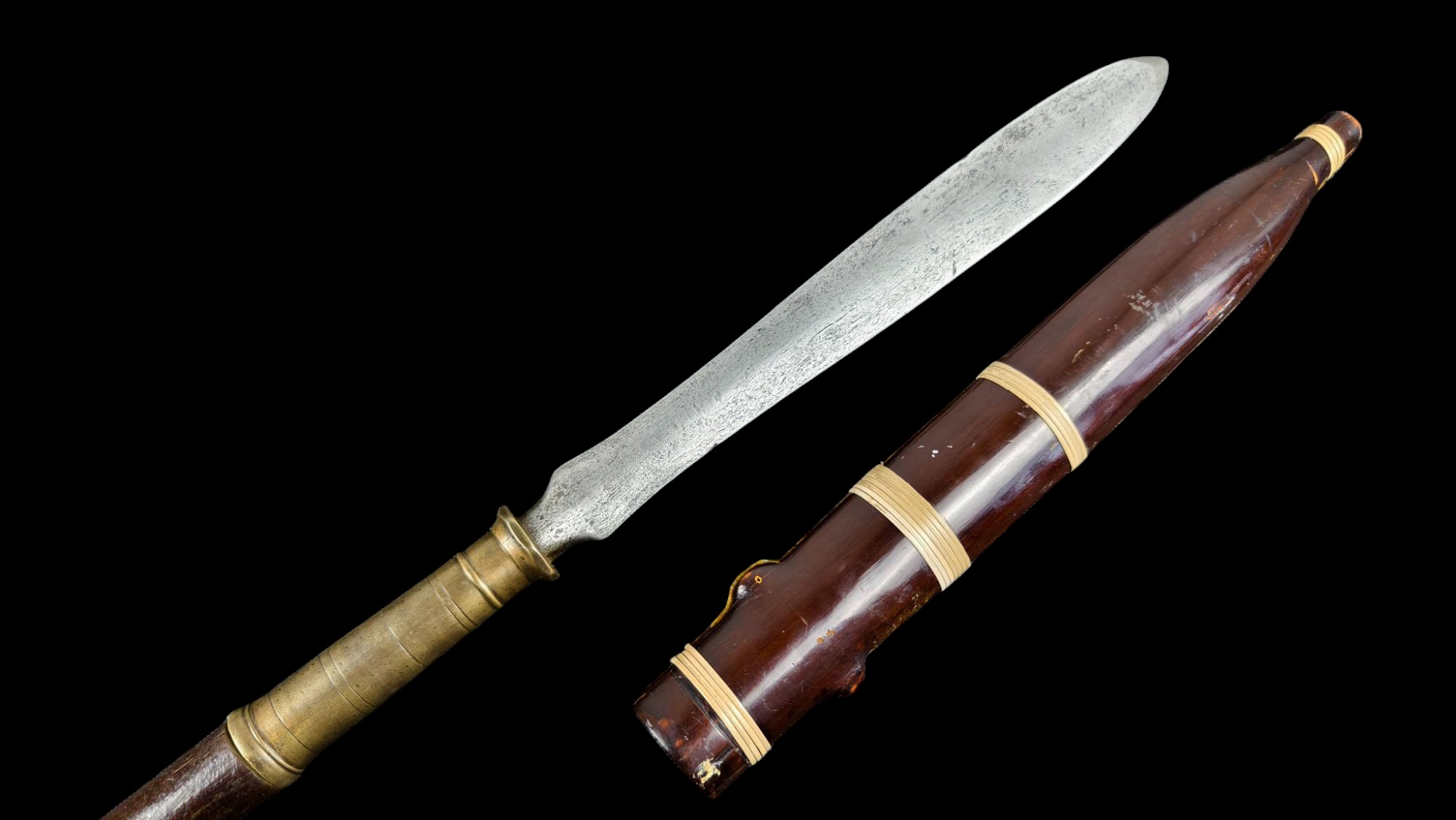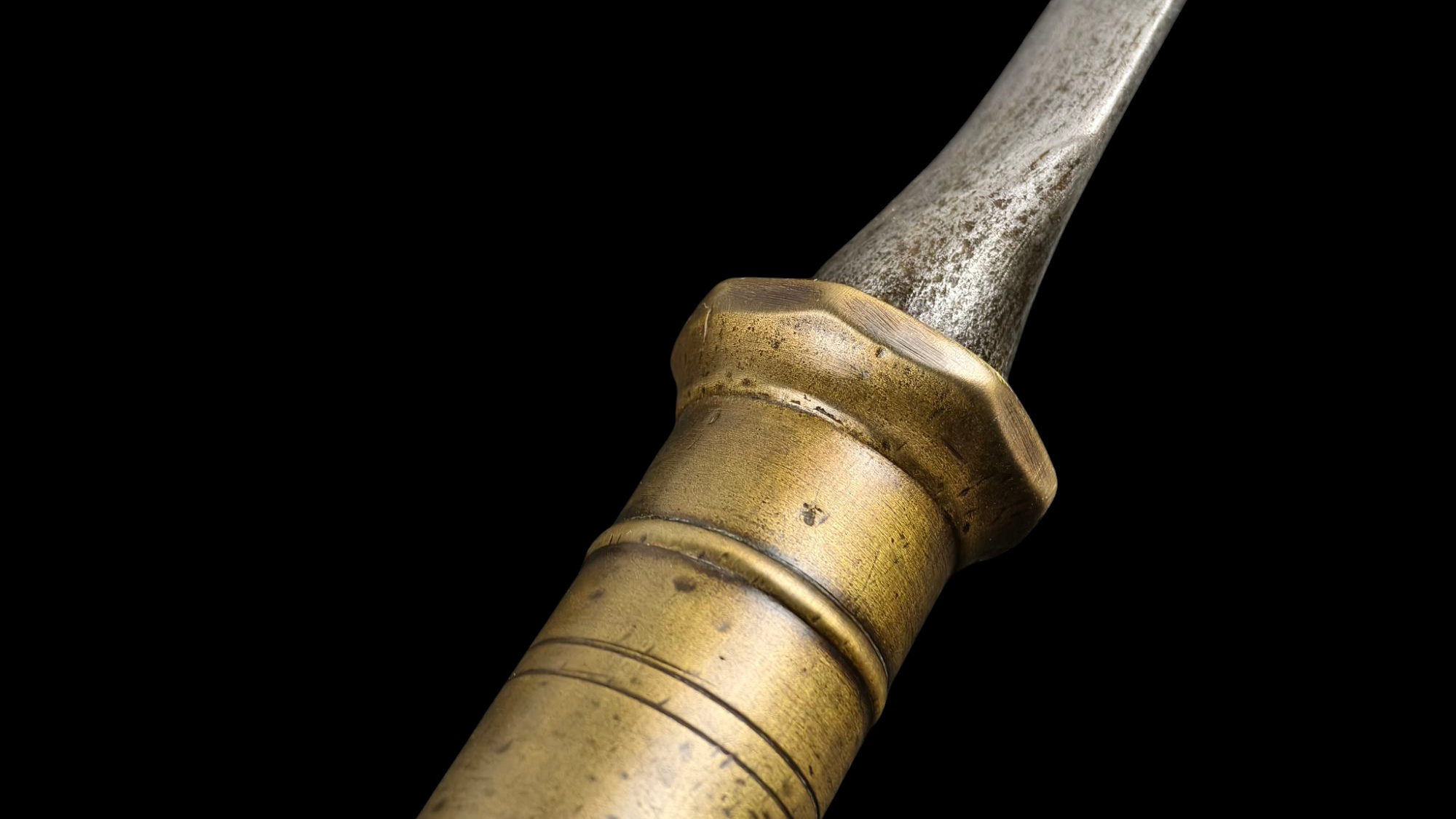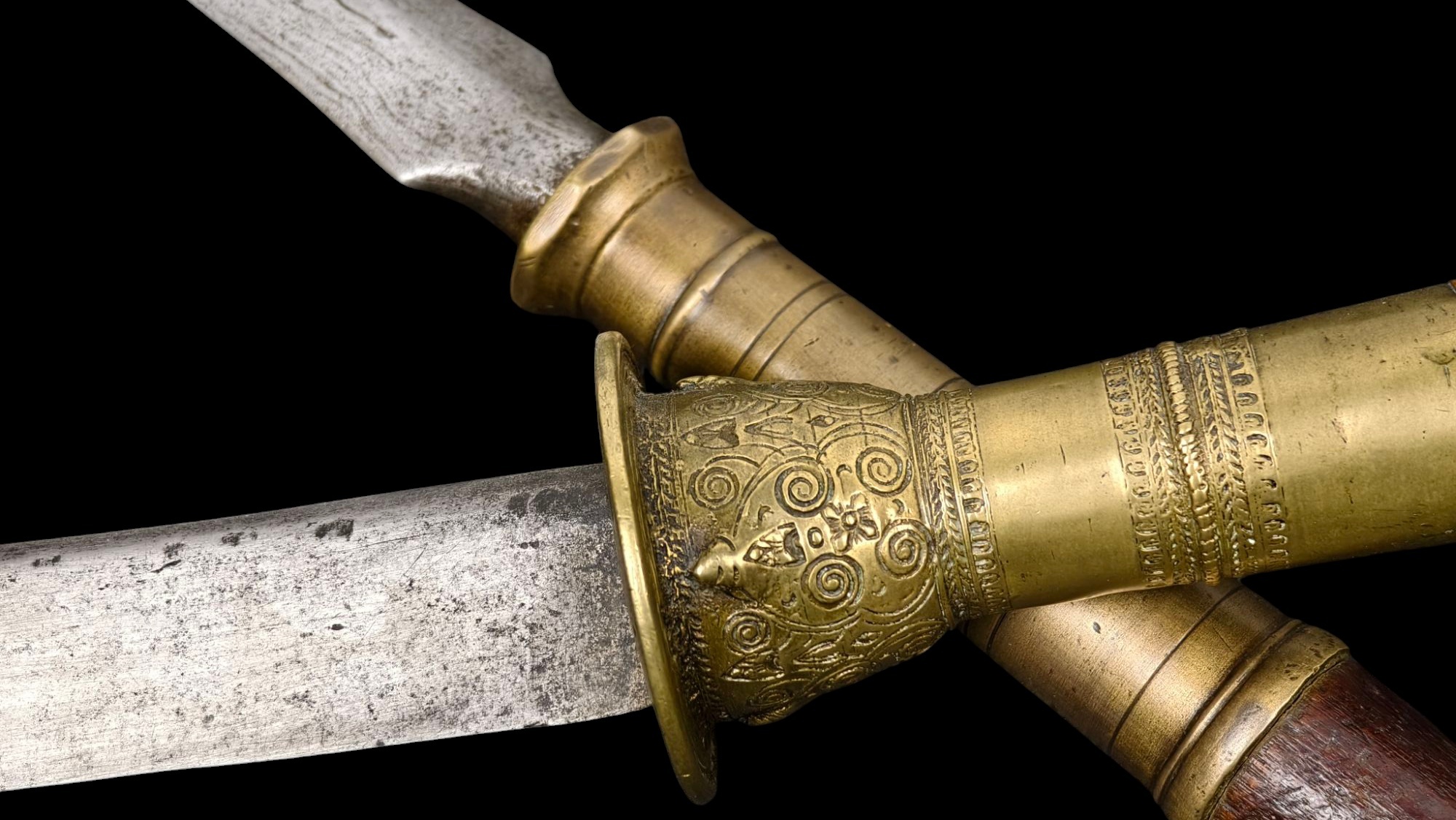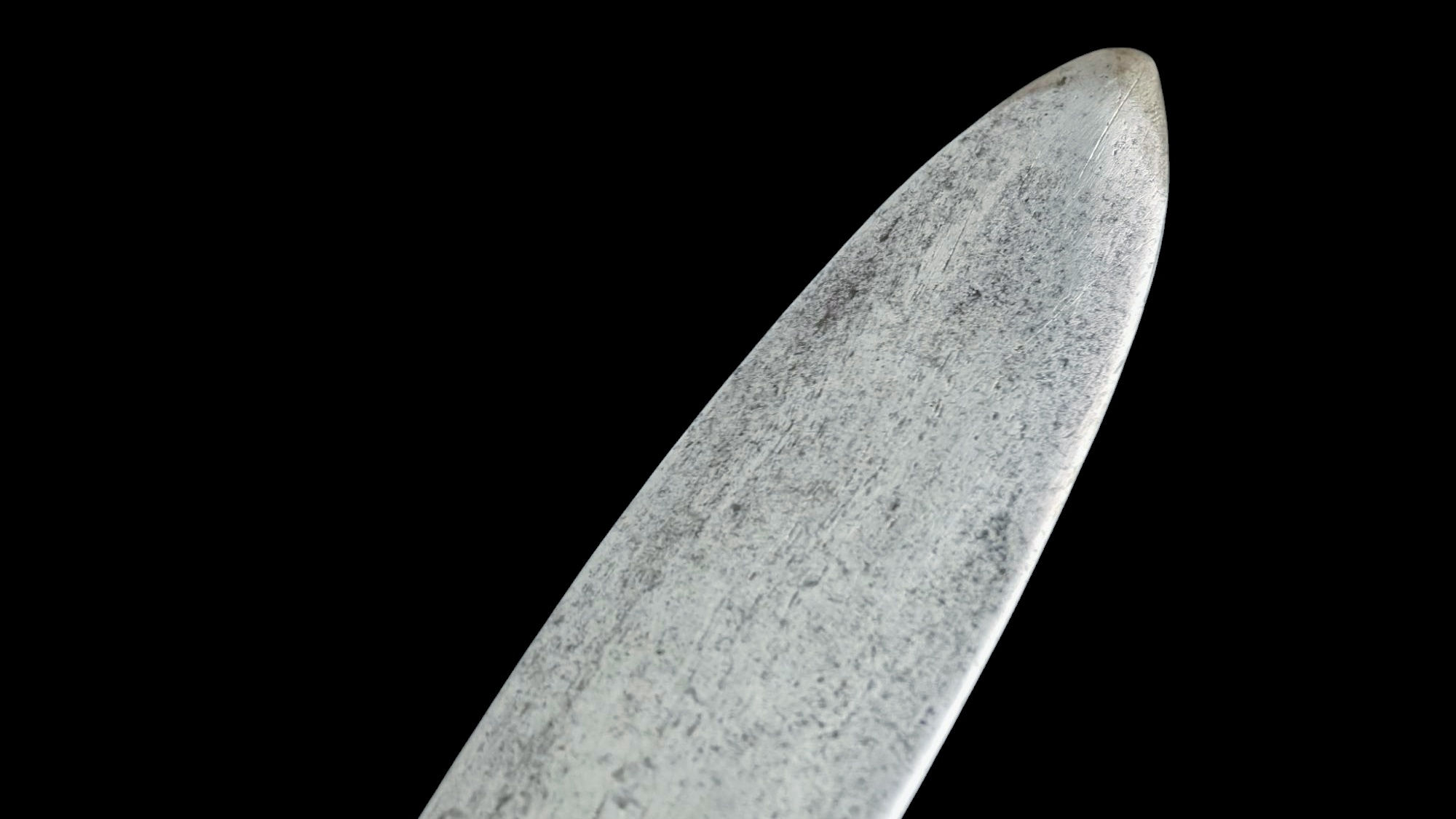
A Slashing Spear
February 26, 2025 Asian Arms
The spear is a weapon that is not as iconic as the sword in most people's eyes but is in fact a far more common weapon in the context of southeast Asia. As with many dha/daab it was a multi-function tool, both as a weapon of war but also for hunting. Different types of spears of course had different specialized uses and this is one such example. A short spear with a thick head, it is ideal for slashing rather than purely thrusting or throwing (although capable of both as well).
Spears and polearms have a long history in southeast Asia, used both by infantry as well as by specialist soldiers fighting from elephant back and of course cavalry; and their characteristics tend to demonstrate their intended use. This example measures only 169cm overall, indicating it was for use on foot. The tip is not particularly acute, indicating it was not primarily intended for thrusting, while the thick based of the blade and the broad, sharp edges make it ideal for slashing. This ties in well with the shorter shaft as it is easy to rotate, much like a quarterstaff.

The shape of the spear head is a leaf like form common across much of southeast Asia, however the collar gives some clues to the likely origin. The casting is a thick, heavy bronze, similar in composition to the cast handles of many swords from the region of central and southern Laos.

This closely mirrors the cast elements common to Laos war swords of the 18th and 19th centuries.

The blade shows strong signs of lamination indicating it has significant age and was made before mass steel imports to the region.

The entire piece is still very solid with no movement to the blade and shaft. The surviving scabbard is an unusual element that illustrates that protecting these weapons from the the conditions of the region was important and that the effort required to maintain the weapon was not unlike that of a sword.
This piece most likely dates from the 1800s as the spear shaft would not likely survive from earlier periods and its acquisition in the UK is a strong indication for collection in the same period where British colonial personnel were active not only in Burma but had interests in Thailand and the wider region particularly in the teakwood trade.
While a precise attribution to a specific ethnic group is difficult and not something I will attempt within the scope of this article, it is a fascinating example of a clearly specialized weapon with its own martial characteristics just as deserving of study as any sword from the region. In fact those who travel in southeast Asia are as likely to see spears preserved within local temples and museums as swords.
These weapons may not command as much prestige as other types within the collecting world, but they are undoubtably a core element of the military history of the region.